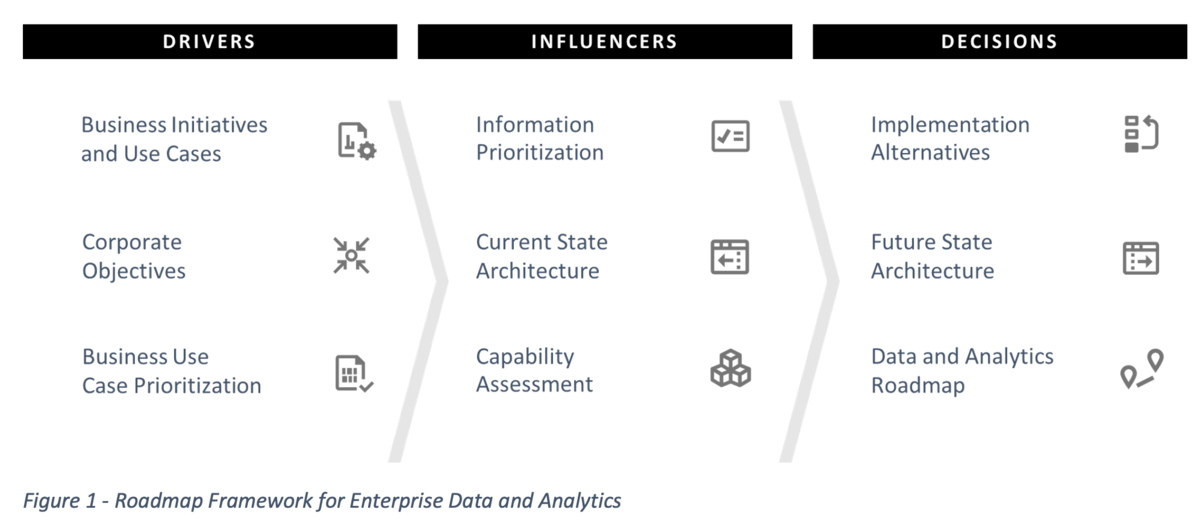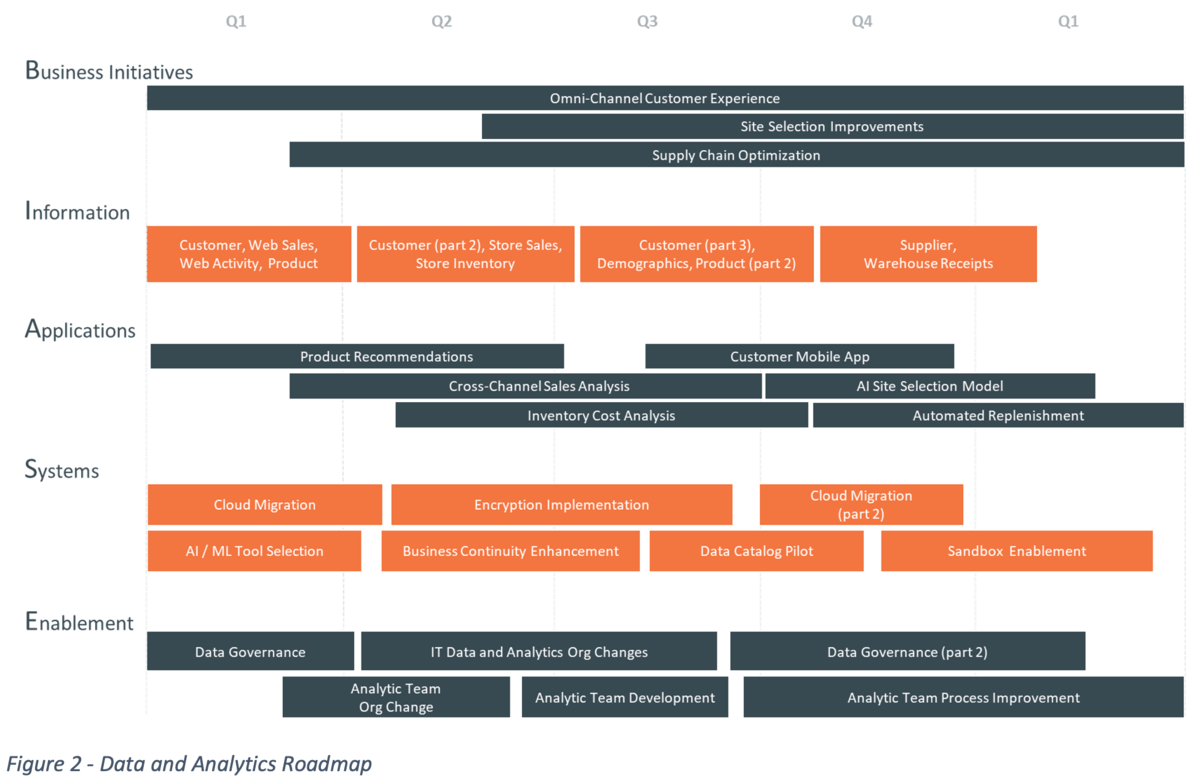Many data strategy teams struggle to develop an enterprise data and analytics roadmap because of an apparent dilemma: If they focus only on near-term data needs without adequately considering the wider enterprise requirements – both known and unknown – then the data will be deployed in a way that exacerbates proliferation, inconsistency, and incoherence. However, if they choose to deploy data as an enterprise “foundation” – disconnected from specific business initiatives – then data delivery efforts will balloon in scope, having no clear mechanism to determine which data elements are needed, other than through a general sense of what people consider “important."
But this dilemma is based on a false choice of the two extremes; there is a healthy middle ground. With the right approach, it is possible to meet the needs of targeted business initiatives while simultaneously contributing to a coherent foundation of data.
Building a roadmap for a large, complex enterprise can be daunting. Breaking the process down into essential elements helps manage the complexity, avoid common pitfalls, and set the data and analytics program in the right direction. Any data and analytics team – composed of both business and IT members – can use the following framework (depicted in Figure 1) to develop an effective roadmap, either to create a new one, or to re-examine and re-work an existing roadmap.

Drivers
Drivers provide the motivation and justification for the rest of the roadmap. They also establish a crucial scoping mechanism. Every data element deployed, every data quality issue dealt with, and every data governance policy established should have a clear line to an in-scope business driver.
Business Initiatives and Use Cases. While proposing new initiatives based on business value may be useful, the most crucial action here is to simply identify the already-planned and already-funded business initiatives of the enterprise. Virtually every major business initiative requires data and analytics for success. Therefore, this initial move positions the roadmap to be strategic, by definition, because every action on the roadmap underpins the most strategic initiatives of the company. To further refine the target, the team identifies use cases within these initiatives, which may include planned delivery of packaged or custom applications with an embedded analytical component, or they may include analytic use cases that will leverage standard reporting and analytic tools – from basic to advanced.
Corporate Objectives. In addition to noting the objectives of the in-scope business initiatives and use cases, here the team looks for themes and directives that influence multiple initiatives. Some of these directives may be business-oriented, such as a lean management philosophy or a “going green” program. Others may be technical in nature, such as a move to the cloud or an over-arching digitization strategy.
Business Use Case Prioritization. Here, the team prioritizes the identified use cases – based on a combination of business priority and organizational readiness– and decides which to include on the roadmap.
Influencers
Influencers support the drivers by determining the gaps in information, architecture, and capabilities that must be addressed to meet the needs of the in-scope business initiatives and use cases.
Information Prioritization. While identifying information needs to support business initiatives and use cases, the team will also find that multiple business initiatives and use cases within them require some of the same data. Therefore, the team prioritizes and plans deployment of that data so it can be shared while adding direct value in support of important business needs at the same time.
Current State Architecture. No large organization has the luxury of starting their data strategy from scratch. Here, the team gains an understanding of the current state of technology, data, and other factors that influence the architecture. Rather than analyzing every detail, the team captures coarse-grained information across the ecosystem while doing more fine-grained analysis in areas that will directly affect the in-scope initiatives.
Capability Assessment. Deploying shared, enterprise data successfully requires technical and non-technical capabilities, such as data governance, analytic capabilities, organizational processes, training, and so on. Like all other aspects of the roadmap, the idea is to plan only what is needed when it is needed while continuously improving shared capabilities with every action.
Decisions
Decisions are made to establish the future vision and to develop a tangible plan to get there.
Implementation Alternatives. When envisioning a future state, there will be alternatives to consider at various levels. First, there are the big picture decisions such as the level of independence and inter-dependence across business domains, leading to choices regarding the depth of integration required. Then there are decisions about how the elements of the ecosystem will relate and connect to each other. Finally, there are product-level choices, especially focused on enabling near-term, in-scope business needs.
Future State Architecture. With decisions made, the team establishes a vision of the future state data and analytics architecture. The vision should clearly articulate how the architecture will support the selected initiatives and use cases while being ready to scale to meet the needs of future initiatives and use cases in the most cost-effective manner.
Data and Analytics Roadmap. The comprehensive final roadmap is composed of “swim lanes” identifying the targeted business initiatives, information to be deployed, applications and analytic use cases to be enabled, system-level infrastructure services to be provisioned, and the enabling capabilities needed to support the other swim lanes, as shown in Figure 2.

Conclusion
The roadmap is comprehensive in the sense that it covers all actions needed to support targeted business initiatives with data and analytics, but it’s not necessarily intended to cover all data deployment for the enterprise. Some initiatives may be appropriately contained completely within one business domain, or it may simply be impractical to fold all major business initiatives into the roadmap, especially early in the process of developing an enterprise approach. And some enterprises may need multiple roadmaps, especially in cases where business units only minimally benefit from shared and integrated data across unit boundaries.
While the content of the roadmap will of course be different for every enterprise, any organization can act right away. It’s simple in principle – find the most important business initiatives of the enterprise and show how they will be supported with the data and capabilities they’ll need to be successful. You can literally start developing your own roadmap right now.



